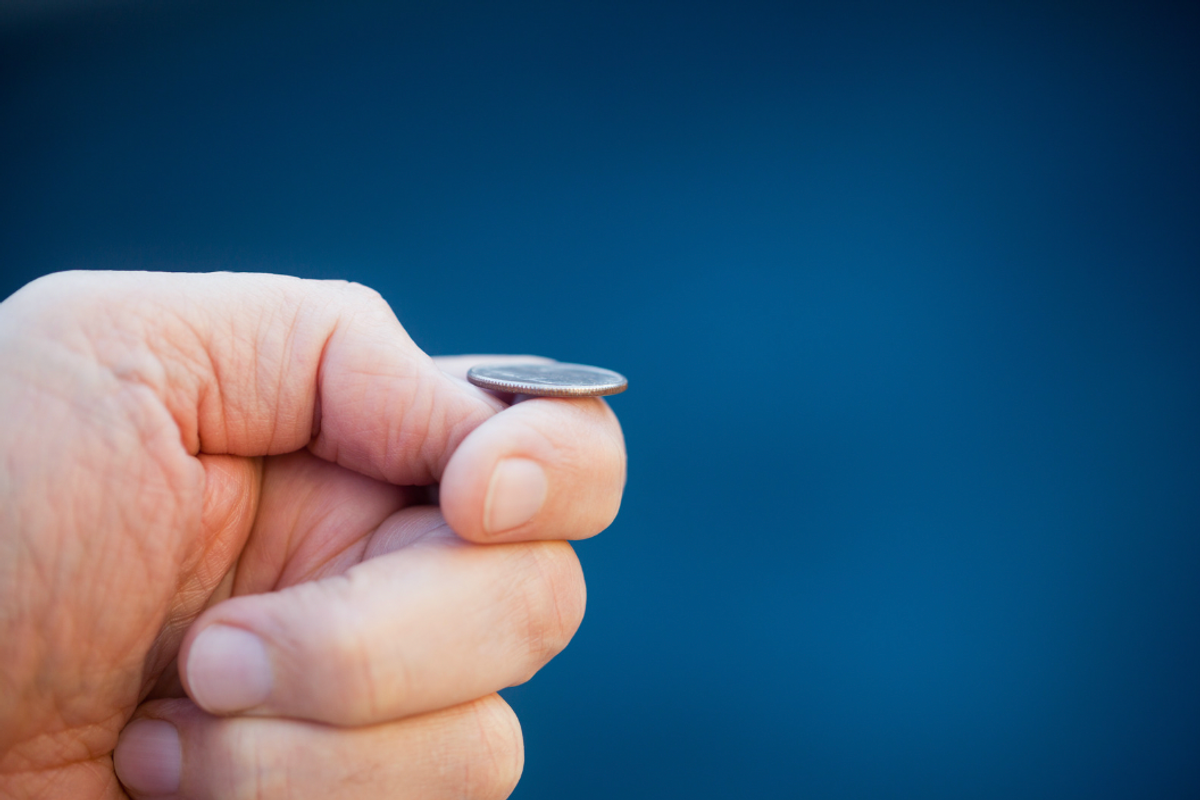Scientists find that coin tosses aren't 50/50. Here's how you can get an advantage
The age-old method isn't as fair and practical as we originally thought.

Coin tosses aren't 50/50 like we've been led to believe
Settling things by coin toss has been around for centuries. The ancient Romans called it “‘Heads or Ships.” Britains of the Middle Ages knew it as “Cross or Pile.” Throughout history, this game of chance was believed to be a fair, unbiased way to settle a dispute, choose which team goes first in a sports game and make decisions.
And the thought behind this makes sense. After all, there are only two sides to a coin, making the odds for each outcome an even 50/50. It doesn’t get more even than that.
However, a team of scientists, led by former magician and American mathematician Persi Diaconis, have discovered that this age-old method isn’t as evenly split as we believed. And there's even a way to slightly cheat the odds to your advantage.Diaconis made a name for himself by studying (and debunking) randomness, one of his more famous feats being determining how many times a deck of cards must be shuffled in order to truly mix up the deck. Even as a teenager, he exposed how casino scammers would shave their dice to improve their chances against customers.
When it comes to coin games, Diaconis has long argued that while it’s “pretty close to fair,” it’s definitely not 50/50. Especially when a little wobble is introduced into the toss, which increases the chance that the coin will land on the same side it started.
A group of scientists set out to test Diaconis' findings and their study, currently in preprint, revealed that coins did indeed land on the same side they were tossed from around 51 percent of the time.
“According to the [Diaconis] model, precession causes the coin to spend more time in the air with the initial side facing up,” they wrote. “Consequently, the coin has a higher chance of landing on the same side as it started (i.e., ‘same-side bias’).”
If you bet a dollar on the outcome of a coin toss 1000 times, knowing the starting position of the coin toss would earn you 19$ on average. This is more than the casino advantage for 6deck blackjack against an optimal player (5$) but less than that for single-zero roulette (27$).
— František Bartoš (@BartosFra) October 9, 2023
The study recorded 350,757 coin flips, carried out by 48 people using 46 different currencies. In the end, there turned out to be a 50.8 percent chance of the coin showing up the same side it was tossed from.
They also found that some tossers showed a strong same-side bias while others had none at all, indicating that coin tosses may come down to the tosser, ever so slightly.
While this might not seem like a huge margin, the advantage becomes clear when you put into a betting scenario. "If you bet a dollar on the outcome of a coin toss (i.e., paying 1 dollar to enter, and winning either 0 or 2 dollars depending on the outcome) and repeat the bet 1,000 times, knowing the starting position of the coin toss would earn you 19 dollars on average,” the team explained.
"This is more than the casino advantage for 6 deck blackjack against an optimal-strategy player, where the casino would make 5 dollars on a comparable bet, but less than the casino advantage for single-zero roulette, where the casino would make 27 dollars on average."
You could also use physics to your advantage, not just probability. Diaconis also proved that the head side of a coin is a tiny bit heavier than its tails counterpart, causing it to land on tails more often. Especially when it comes to Lincoln Memorial pennies.
So next time you are fighting with a loved one over whose turn it is to do the dishes, you can still settle it with a coin toss. Just conceal the starting position first. Or take a peak a use this hard earned knowledge. No judgement.

